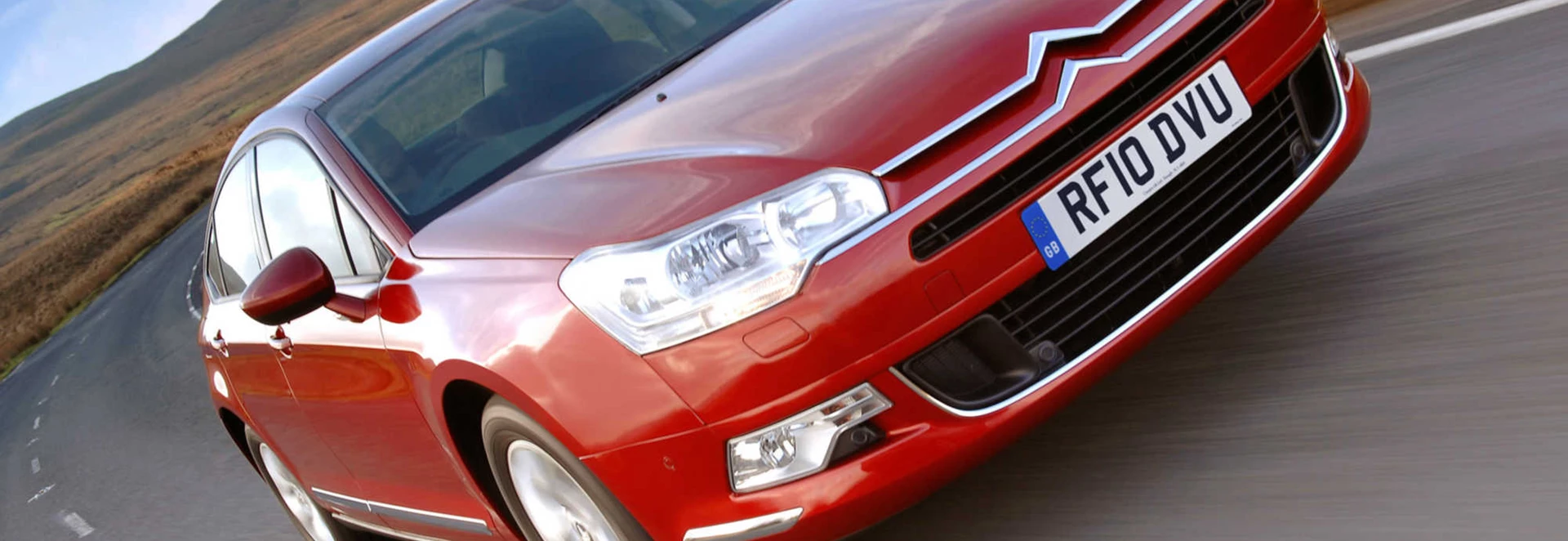There are few family MPVs around that are as well-known as the Citroen C4 Picasso, which is widely regarded as one of the best all-round packages in the family car market and has been since the Picasso name first appeared in 1999.
Earlier this year, the current C4 Picasso received a mild update with some slightly revised bits and pieces both inside and out to keep it current, with fresh and stylish looks, plus new kit. Who said people carriers have to be dull, eh?
One of the real talking points of the car is that it now comes with Citroen’s small but punchy little 1.2-litre three-cylinder petrol engine. Can a dinky three-pot really work in a big car like this? Well, there’s only one way to find out.
When Citroen launched the C5 its UK division commissioned an advertising campaign which tried to persuade potential customers that this car was as good as any made in Germany. It was clever, but it wasn’t hugely successful and it undersold the car, which is exceptionally good in a very French sort of way.
Unlike the previous C5, this one isn't available in hatchback form, which immediately limits its appeal in this country. Also, the once wide range of engines has been brought down to just two HDi diesels of 1.6 and 2.0 litres.
Both are available with manual transmission, though you can also have a conventional automatic in the 2.0 and a fuel-saving but otherwise unpleasant automated manual in the 1.6.
Performance
With the old 2.2-litre four-cylinder and 2.7-litre V6 diesels out of the way, you have to buy a 2.0 HDi manual if you want a C5 that can accelerate from 0-62mph in under ten seconds. The 1.6 can't do it, and neither can the 2.0-litre if you specify automatic transmission.
The problem is that the C5 is a large car weighing, even in its lightest form, more than 1,500kg. If you never experience the urge to drive quickly, there's no problem. If you do the C5 just isn't going to respond the way you want it to. The larger and more powerful engines that Citroen formerly supplied could do the job, but the fact that you can no longer buy them suggests that an uneconomically smaller number of UK customers ever wanted to.
There is no problem with any of the gearboxes other than the automated manual ETG6, which (like all units of this type) moves from one gear to the next very slowly. It will suit many disabled drivers, and it improves official fuel economy to a small extent, but it also makes the car slower and adds over £1,500 to the price.
Ride and Handling
Its bulk makes it unwilling to be hustled through fast or bumpy corners, but as a relaxed cruiser it's ideal - not least because the engine noise suppression is excellent.
While the pace of the C5 is underwhelming, the ride is happily a different story. French manufacturers have for many years liked to give their larger cars soft but (usually) well-damped suspension, and that's exactly what the C5 has. Its bulk makes it unwilling to be hustled through fast or bumpy corners, but as a relaxed cruiser it's ideal - not least because the engine noise suppression is excellent. In versions fitted with Hydractive rather than conventional suspension, it is worth pushing the Sport button. If you don't do this, the car is too floppy on anything but the most fabulously surfaced roads. Sport mode firms up the suspension almost perfectly.
Interior and Equipment
The first-generation C5 was the first Citroen to use the now common 'C plus a number' naming convention.
The fact that it isn't a hatchback limits the C5's practicality. The boot is fairly modest for a car of this size, with a capacity of 439 litres, and it has a narrow opening and a high sill. More positively, Citroen's decision to give the C5 a concave rear window means that the bootlid is unusually long. The interior quality is very high and the front seats are excellent. The view out isn't so good. Rear visibility isn't too bad by current standards, but you'll have a hard job looking past the front and side pillars. There are three trim levels, called VTR, VTR+ and Exclusive. All of them have air-conditioning (with a pollen filter in the Exclusive), cruise control, three 12v sockets, Bluetooth connectivity and a leather-trimmed steering wheel. A Techno Pack, consisting of satellite navigation, chrome window sills and rear parking sensors, was brought in as a £700 option in 2012 but has since become standard across the range.
Cost
The most economical version is the 1.6-litre HDi diesel with the ETG6 gearbox, which achieves 62.8mpg and emits just 111g/km of CO2, but the cheaper and more satisfactory manual model is in the same VED band.
For its size, the C5 is relatively inexpensive, with prices starting just below £22,000 and not extending far beyond £27,000. The most economical version is the 1.6-litre HDi diesel with the ETG6 gearbox, which achieves 62.8mpg and emits just 111g/km of CO2, but the cheaper and more satisfactory manual model is in the same VED band (£30 annual payments). The 2.0-litre HDi isn't far behind with 57.6mpg and 129g/km, assuming manual transmission. The same engine with automatic transmission is much poorer on 45.6mpg and 133g/km.
Our Verdict
Big Citroens, and indeed big French cars in general, rarely attract UK customers. In the case of the C5, that's a pity, because this is a particularly comfortable car, pleasant if not exciting to drive, and cheap to run if you pick the 1.6-litre engine. The biggest let-downs are the poor visibility and the relatively small luggage space. It’s still worth considering though if you’re looking for an alternative and stylish choice of large family car.




